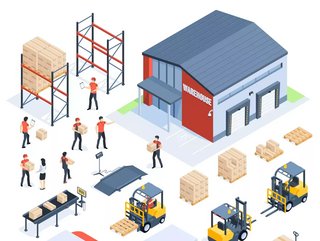How to Improve Supply Chain Resilience: Go Multi-Carrier

In the wake of the Covid-19 outbreak, e-commerce is firmly in the spotlight and improving supply
chain resilience is now on C-level agendas across industries worldwide. Whilst many organisations
may have a degree of flexibility built into their supply chains, research from the Institute for Supply
Management in the USA in March found that almost three-quarters of companies reported supply
disruption, and 44% did not have a plan in place to deal with the kind of disruption brought by the
pandemic.
Using a Multi-Carrier Shipping Strategy to Increase Supply Chain Resilience
At a time of significantly increased e-commerce demand, the task of getting products to customers
has never seemed more difficult. Shippers have been forced to look towards new fulfilment
methods to provide the additional capacity and flexibility that’s required to manage the surge in
order volumes and meet on time delivery requirements. One key consideration: moving to a multi-
carrier distribution strategy to reduce transportation costs, provide a consistent level of service to
customers, and meet their different shipping requirements.
Make Switching between Carriers Easier
The challenge has always been that each carrier insists on applying rigorous, and unique, labelling
and electronic communication requirements in order to move parcels through its network. Shippers
who rely on a specific carrier have to meet its specific requirements or suffer the consequences of
delivery delays, lost packages, or unexpected surcharges and fees. And guess what? Each carrier
wants you to use its own IT software platform to make this compliance possible.
There’s no doubt single-carrier systems are well designed for the carrier they represent, but in order
to adopt a multi-carrier strategy, shippers need to move away from them. Carrier-supplied platforms
make switching between carriers or using multiple carriers difficult or prohibitive— either because
shippers must hit specific contracted volumes with each carrier or because of the unwieldiness of
managing separate systems for different carriers.
For example, with a carrier-supplied platform, the shippers’ employees need the insight to make the
best choice about how to get an order to a customer. Comparing rates and routes is labour-
intensive and time-consuming. Also, using carrier-supplied platforms increases the chances of
missing out on the pricing and delivery advantages available with multiple national, regional, and
local carrier services, as well as with national postal services. Furthermore, when dealing with
different sets of requirements and multiple staff members using separate terminals, it’s easy for
keystroke and human errors to occur, resulting in delivery delays, lost packages, extra costs, or the
inability to use particular services.
Streamlining Shipping Processes and Increasing Resilience with Multi-Carrier Shipping Software
While the end goal of any shipper is to deliver products to customers on time, without damage, at
minimal cost, and in the most efficient manner possible, the recent spike in e-commerce has also
increased customers’ ability to customise their shipping options. For example, one customer may
choose to have their package delivered to his or her home, and another may opt for click and collect.
Multi-carrier shipping software enables the shipper to work with multiple carriers’ labelling and
communications requirements and meet their customers’ delivery demands from within the
shipper’s own system. The solution automatically determines the carrier that can provide the best
rates to a particular region and according to the shipper’s business rules, ensuring every shipment
complies with each carrier’s requirements, as well as with any applicable trade regulations.
In addition, multi-carrier shipping software enables shippers to easily use “zone skipping” (also
known as “hub induction” or “direct injection”) to improve customer service and cut transportation
costs. Zone skipping occurs when multiple customers’ orders are consolidated for the first leg of the
delivery journey and then inserted into a parcel carrier network for the last-mile delivery. This is
especially beneficial for cross-border shipping because it significantly simplifies end-to-end logistics
and decreases customs clearance costs. It also provides greater flexibility by allowing shippers to
select local carriers in different countries and regions that have optimal delivery networks for serving
their customers.
Building Resilience to Improve Future Performance
Importantly, a cloud-based multi-carrier shipping system can give shippers the ability to quickly
onboard and optimise new carrier services. This is a gamechanger in a crisis that requires a retail
shipper to suddenly increase capacity, or pivot to a ship-from-store model, for example - or even pull
local courier services into the transportation mix to maintain on-time delivery rates. It can also
provide the data and analytics necessary to understand where logistics performance is sub-par and
uncover opportunities to increase performance and reduce cost.
Increasing supply chain resilience though multi-carrier shipping solutions gives shippers the ability to
respond to, and recover more quickly from, unforeseen disruptions, and even to grow by optimising
supply chain operations for the long term to increase customer service, market share and financial
performance.






